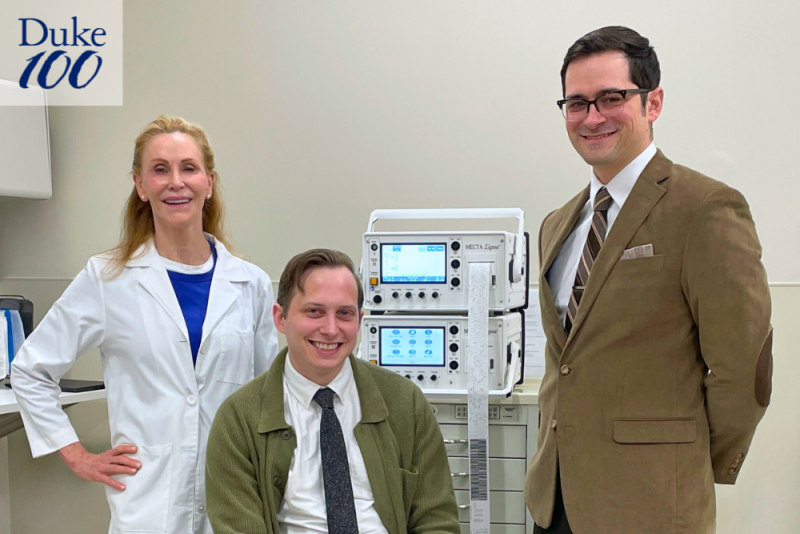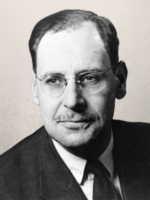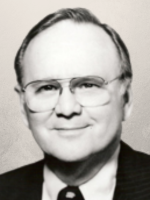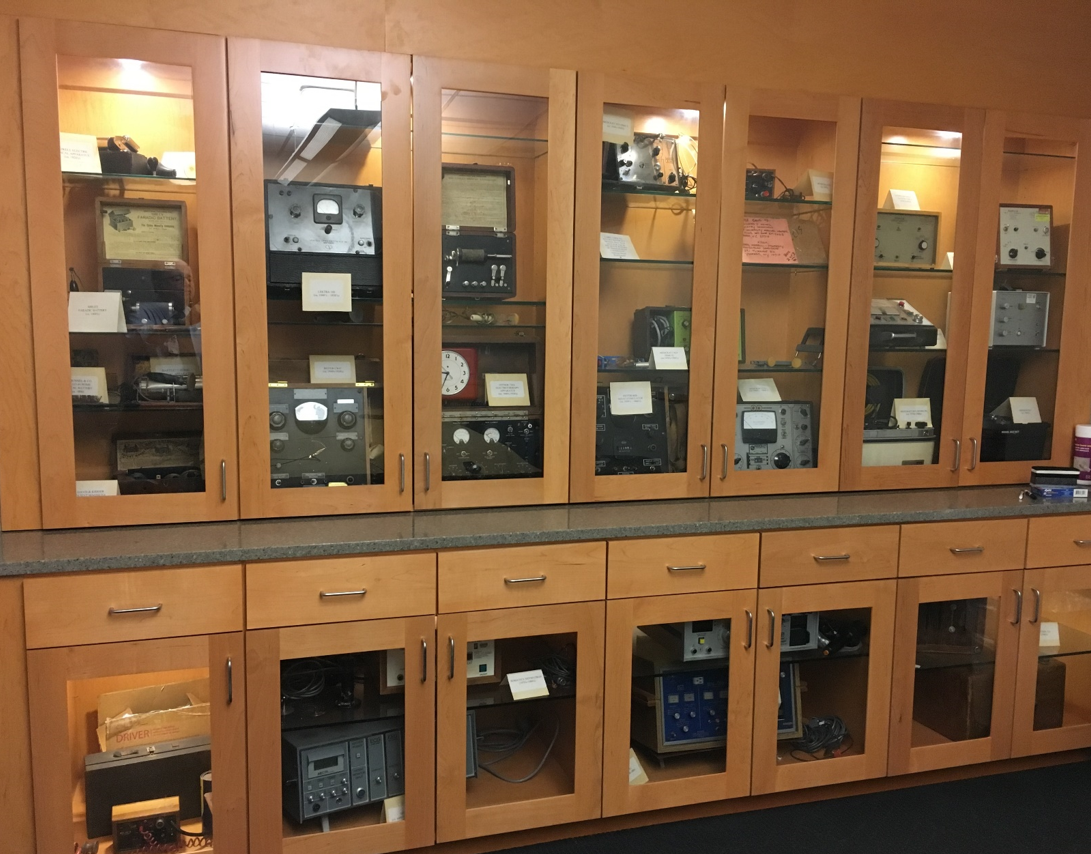
“They got my Carol back for me,” said Arthur Grondin, referring to the Duke Health team who treated his wife with electroconvulsive therapy (ECT).
For more than 10 of their 59 years of marriage, starting around 2012, Carol Grondin suffered from severe depression, at times so debilitating that she was unable to get out of bed and had no interest in eating or other activities.
In the fall of 2022, Carol’s condition worsened significantly, prompting physicians at a hospital in Kinston, North Carolina, to rush her to Duke University Hospital by helicopter. At Duke, she was diagnosed by Jacob Feigal, MD, with catatonia, a complex and potentially life-threatening psychiatric condition that can be treated effectively with ECT.
Within a few days, Feigal, a Duke psychiatrist and internal medicine physician, and his team began Carol’s eight-treatment regimen of ECT at Duke Behavioral Health North Durham at Duke Regional Hospital.
ECT is a brain stimulation treatment administered under general anesthesia that involves electrically inducing a controlled seizure. It’s used to treat severe depression that hasn’t improved with other interventions, depression with psychosis, bipolar depression, bipolar mania, schizophrenia, and catatonia. In a typical regimen, the patient receives eight to 15 treatments, each lasting about 30 to 90 seconds, delivered over the course of several weeks. After the initial course of treatment, many patients continue to receive ECT periodically to prevent and address relapses.
“[ECT] has made a big change. We started camping and having fun again and just enjoying each other, my husband and I, which we weren’t doing before.”
— Carol Grondin
After a brief relapse of severe depression in March 2023, Carol’s mental health has vastly improved. “[ECT] has made a big change. We started camping and having fun again and just enjoying each other, my husband and I, which we weren’t doing before,” she reflected. “I was in bed all the time, and I didn’t feel good.”
Beaming, Arthur added, “She’s almost back to her old self. She’s got a beautiful smile. We’re having a great time now.” These days, Carol comes to Duke every eight weeks for ECT maintenance treatments.
A Long History of Healing through ECT
According to Feigal, the medical director of the ECT clinic, the treatment has significant therapeutic effects on 60 to 80 percent of patients, and 50 to 70 percent of patients experience a complete remission of symptoms after receiving ECT for depression.
“After 80-plus years of doing ECT, there are still no psychiatric treatments as effective as ECT,” said Jonathan Komisar, MD, the medical director of the inpatient psychiatric unit at Duke Regional Hospital and a member of Duke Health’s ECT team.
Duke was the first academic medical center in the U.S. South—and among the first in the country—to offer ECT.

First delivered in Italy in 1938, ECT was introduced at Duke University in 1940 by Hans Lowenbach, MD, a physician and researcher who had just transitioned to Duke from Johns Hopkins University. Duke was the first academic medical center in the U.S. South—and among the first in the country—to offer ECT.
Lowenbach’s arrival at Duke marked the beginning of a long and influential institutional history of providing ECT clinical services, training thousands of clinicians to thoughtfully and effectively administer ECT, and advancing the science of ECT through cutting-edge research. Today, these programs are stronger than ever.
The Duke Difference
“A hallmark of our ECT clinic is our ability to appropriately weigh medical risks and put them in context,” said Feigal. “And part of what makes that possible is a really good relationship with our anesthesiology colleagues and a strong nursing staff, so we can take care of patients with serious and complicated illnesses.”
The main risk of the procedure is that it requires the patient to undergo general anesthesia recurrently over the course of a few weeks. A common side effect is memory impairment, specifically difficulty making new memories during the treatment process and, in some cases, recalling memories from the past. However, within about a month after treatment ends, the patient’s memory substantially improves.
Part of the calculation, said Feigal, is recognizing the risks of not treating the patient when their psychiatric illness becomes severe and sometimes life-threatening—as in Carol Grondin’s case—while knowing how rapidly and safely ECT can help a patient with certain conditions improve.
“Having our own space and staff allows us to deliver much more tailored care.”
— Jacob Feigal, MD
Other standout features of Duke’s ECT program are its dedicated team, focused primarily on ECT services, and standalone ECT suite. “[In many medical centers], ECT is carried out in the post-anesthesia care unit (PACU), so they’re sharing time, space, staff, and resources for various procedures,” said Feigal. “Having our own space and staff allows us to deliver much more tailored care.” Duke’s first discrete ECT suite, housed in Duke Hospital (“Duke South”), was built in the mid-1980s and was operational until 2021, when the health system opened a brand-new, state-of-the-art ECT suite at Duke Regional Hospital.
Nurses have always played a critical role in the ECT clinic, working with patients from initial intake through long-term follow-up. Feigal noted that the nurses deeply understand all aspects of the ECT “journey,” and they really get to know the patients and their families.
“We’re the continuity of care,” said Grace Gunderson-Falcone, RN, DNP, a nurse practitioner who joined the clinic in 1987 and now serves as ECT program director. “We’re always calling [the patients] or they’re calling us. We don’t lose sight of them throughout. And sometimes these patients come for maintenance ECT for 20 or 30 years.” And like her, she noted, several of the nurses have worked in the clinic for decades.
Arthur Grondin observed that this patient-centered approach also extends to the patient’s family. “The university and the ECT and the Duke Regional people didn’t just worry about Carol. They worried about me, too,” he recalled. “There was a couch in there and they made sure I had a blanket. They made sure I had something to eat and a coffee. Grace and her team, you couldn’t ask for a better bunch.”
Building an ECT Workforce
Another part of Duke’s enduring ECT legacy is the extensive ECT training its clinical teams have provided over the years, not only to Duke students and trainees, but also to clinicians across the world.

Since Lowenbach’s arrival in 1940, all psychiatry residents—and many medical students—have received training in or at least exposure to ECT, according to professor emeritus Richard Weiner, MD, PhD, who led Duke’s ECT program from 1991 to his retirement in 2021. In fact, it was Lowenbach who first introduced Weiner to ECT in the 1970s when Weiner attended Duke as an MD/PhD student. C. Edward Coffey, MD, a psychiatrist and neurologist who served as medical director of ECT from 1984 to 1991, expanded ECT training opportunities for residents in the 1980s.
Currently, the psychiatry and internal medicine-psychiatry (“med-psych”) residencies offer a six-month ECT elective, and all psychiatry and med-psych residents are exposed to ECT through inpatient rotations. And given the clinic’s volume of patients, the three to five residents who pursue the elective each semester gain an extraordinary amount of experience.
“There aren’t a lot of programs in the country that are treating 15 to 20 patients, five days a week,” said Feigal. “It’s great for us because we see a lot of patients, so we become very comfortable with a wide variety of cases. And it’s great for trainees, because there isn’t really anything that we haven’t seen.”
The ECT team has also trained many Duke anesthesiology residents, medical students, and nursing students.
Duke ECT training also extends well beyond the campus. In the late 1980s, Weiner, Coffey, and Gunderson-Falcone established ECT visiting fellowships for psychiatrists and nurses from other medical centers. Fifteen times a year, two to three participants spent a week at Duke learning best practices for administering ECT through a combination of didactic instruction and bedside observation. Between the inception of these programs and 2020—when it was permanently derailed by the COVID-19 pandemic—Weiner, Gunderson, and their team trained more than 1,000 clinicians from across the U.S. and 26 other countries.
Shortly thereafter, building on the success and longevity of the visiting fellowships, Feigal led a multidisciplinary team in developing a three-day virtual ECT course, now offered four times per year for up to 20 participants in a course. Since its launch in 2022, 130 clinicians, hailing from across the U.S. and eight other countries, have completed the course.
Duke ECT Research: The Early Years

Sarah “Holly” Lisanby, MD, professor emeritus and former chair of Duke Psychiatry & Behavioral Sciences, said her early exposure to the “transformative power of ECT” as a Duke medical student in the 1980s was instrumental in her decision to pursue psychiatry and a career in brain stimulation research.
Lisanby, who also completed her psychiatry residency at Duke, is just one of many current and former Duke Psychiatry & Behavioral Sciences faculty members who have made significant contributions to the advancement and refinement of ECT,* collectively amassing hundreds of ECT-related academic publications. This research has focused broadly on pinpointing how ECT produces its profound healing effects, increasing its safety and efficacy, and minimizing its side effects.
“Duke was a leader in adopting ECT and advancing scientific research on ECT, starting with Hans Lowenbach. And that’s a unique role that Duke played.”
— Sarah “Holly” Lisanby, MD
“Duke was a leader in adopting ECT and advancing scientific research on ECT, starting with Hans Lowenbach. And that’s a unique role that Duke played, because it was unusual to do animal studies on mechanisms of action of treatments like ECT back in the 1940s,” said Lisanby, who now directs the Division of Translational Research and the Noninvasive Neuromodulation Unit in the Experimental Therapeutics and Pathophysiology Branch at the National Institute of Mental Health (NIMH).
Lowenbach, a pioneer in investigating the safety of ECT, was one of the first researchers to examine the effect of ECT on brain function. Among his most impactful research was a study published in 1944 that demonstrated that standard ECT does not damage the patient’s brain.

A decade later, then-assistant professor of psychiatry William P. Wilson, MD, led several of the earliest studies on the cardiovascular and metabolic effects of succinylcholine chloride, a muscle relaxant, when used in ECT. Up to that point, ECT was administered without anesthesia or muscle relaxants, leaving patients vulnerable to injury. These developments—known as “modified ECT”—made ECT safer and were being adopted more widely in the 1950s and 1960s.
Weiner, who has a PhD in physiology and a background in electrical engineering, demonstrated through rigorous clinical trials conducted in the 1970s to 1990s that ECT could still be effective when administered with less electricity and when electrodes are placed only on one side of the head. “To me, these studies launched the modern era of ECT,” said Lisanby. “And that spearheaded a series of randomized controlled trials that iterated on that theme of making the electrical pulses briefer, as well as finding different ways to apply them to the scalp, and other advances.”
“To me, these studies launched the modern era of ECT.”
— Sarah “Holly” Lisanby, MD
Weiner also developed an algorithm, in collaboration with Coffey and emeritus professor Andrew Krystal, MD, that could be used to analyze electroencephalogram (EEG) signals during ECT treatment. This development enabled clinicians to predict whether the treatment would be effective, which could in turn help them tailor the treatment to the patient. The algorithm was then integrated into one of the ECT devices.
Duke experts have also influenced the brain stimulation field through national leadership and advocacy. For many years, Weiner chaired the American Psychiatric Association’s Task Force on ECT, which developed ECT practice guidelines. Lisanby followed in his footsteps as the next chair of this task force, which has just released updated guidelines. And in 2015, Weiner and Lisanby testified at the FDA public hearing to evaluate the reclassification of ECT from Class 3 (substantial risk) to Class 2 (moderate risk); the treatment was reclassified in 2018.
(Watch a video about Weiner’s career)
Duke ECT Research: The Modern Era
Building on earlier research, Lisanby is working to develop the next generation of electrical brain stimulation technology: using magnetic fields to accomplish the same clinical benefit ECT affords, but without side effects. These approaches include transcranial magnetic stimulation (TMS)—currently used to treat severe depression and obsessive-compulsive disorder and to help people quit smoking—and magnetic seizure therapy (MST).
While MST, a newer approach developed in Lisanby’s lab, has not yet been approved for clinical use by the Food and Drug Administration (FDA), Lisanby and colleagues—including Weiner—showed in the largest randomized controlled trial of its kind to date that MST is as effective as ECT but even safer. Duke was one of three U.S. sites in the study. NIMH is now funding a confirmatory efficacy trial, which Lisanby anticipates could provide the evidence needed to create a pathway for FDA clearance of MST.
When Lisanby returned to Duke Psychiatry & Behavioral Sciences as department chair in 2010, she recruited Angel Peterchev, PhD, at the time an assistant professor she’d mentored at Columbia University. Peterchev, trained as an electrical engineer and now a professor with faculty appointments in several Duke departments, has made notable contributions to the advancement of both ECT and TMS.

In one line of research, Peterchev and his team—including Lisanby—have been developing 3D computer models from MRI scans to investigate how the electric current produced for ECT and MST flows through the head and where it goes in the brain. They seek to better understand how different settings of the ECT procedure affect the electricity delivered to the brain, with the ultimate goal of optimizing ECT efficacy and further minimizing its side effects.
He’s also working with faculty in Duke’s Pratt School of Engineering and the Technical University of Denmark to expand these 3D head models to incorporate aspects of the neural response to the electricity. The findings from this study, he noted, will be applicable to both ECT and TMS.
Feigal and his team—including trainees—have conducted ECT clinical research. For example, they recently co-authored a descriptive retrospective cohort study reviewing the use and outcomes of “palliative ECT,” or ECT given near end-of-life. Among other findings, the study highlighted cases in which patients with severe depression, previously misdiagnosed with dementia, were effectively treated with ECT.
Feigal, Komisar, and colleagues in Duke’s Department of Neurology are also studying the use of ECT to treat catatonia in autoimmune encephalitis, a rare neurological condition that causes inflammation in the brain. They’re well positioned to advance the research in this area, with Duke University being among only a few institutions in the U.S. with extensive experience treating these conditions.
Last year, the team published a review of cases in which ECT was administered to patients with malignant catatonia due to autoimmune encephalitis and proposed a treatment algorithm for these cases. It’s the first-ever case series to use clinical prediction scores to estimate the effects of ECT on patient outcomes.
ECT at Duke: The Next Generation

In Fall 2024, physician-scientist Gregory Sahlem, MD, joined the Duke Psychiatry & Behavioral Sciences faculty, expanding the department’s cadre of experts in brain stimulation research and clinical practice. Sahlem’s focus lies in translating neuro-engineering research into clinical practice. His clinical research on focal electrically administered seizure therapy (FEAST)—an ECT variant designed to strategically narrow the path of electricity to the brain—has shown that FEAST is likely as effective as other types of ECT, while decreasing side effects.
In the coming years, Shelley Holmer, MD, assistant professor and vice chair for adult psychiatry and psychology clinical services, expects to see more collaboration between the department’s research and clinical faculty. “We’ve been an ECT and TMS research center for a very long time here at Duke, and our clinical ECT faculty are involved in research, but I think as we grow, we’ll be able to join these two missions together in a way that hasn’t really been part of clinical services at Duke to that extent.”
The clinic is indeed growing. In Fall 2022, Duke Health expanded ECT clinical services from three to four days a week, and then to five days a week in Summer 2024. And just this month, the clinic began offering TMS treatment to patients. Still, the great and growing need for brain stimulation clinical services in the community inspires Holmer, Feigal, and other clinical leaders to continue to seek ways to further extend this transformative and sometimes life-saving treatment to more patients like Carol Grondin.
“For people who have suffered for prolonged periods with depression, the ability to attain complete remission safely and rapidly through ECT treatment is truly life-changing,” said Komisar. “And to give them their life back in just a few weeks is one of the most rewarding things I get to do.”
“For people who have suffered for prolonged periods with depression, the ability to attain complete remission safely and rapidly through ECT treatment is truly life-changing. And to give them their life back in just a few weeks is one of the most rewarding things I get to do.”
— Jonathan Komisar, MD

*NOTE: Due to limitations of space and scope, this article includes only a sample of impactful ECT research conducted at Duke since 1940. Other Duke Psychiatry & Behavioral Sciences faculty members whose work was influential in the advancement of ECT include, but are not limited to, Ewald Busse, MD (former department chair and former dean of the Duke University School of Medicine), K. Ranga Rama Krishnan, MBBS (former department chair), Thomas Sibert, MD, and David Steffens, MD.